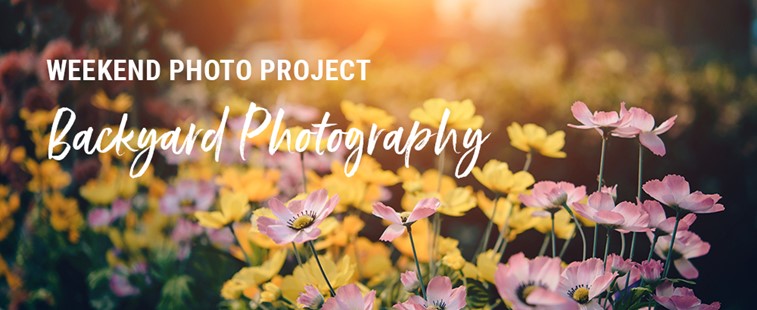
Backyard Photography
When the weather warms up and things start to grow, we have more to photograph in our own backyard, or neighbourhood. In this tutorial we'll briefly discuss:
- Subject selection
- Creating interest
- Avoiding distracting elements
How to choose your subject
- Go in with an objective. What story do you want to tell? Having an objective will help create emotion in your picture.
- Look for new things in familiar surroundings.
- Find interesting flowers and leaves. Try taking a collection of plant life in a single colour scheme, or a set of interesting shapes
- Look up into trees. Don't limit your creativity to what's just in front of you. What can you see above you that would make a great picture?
- Look down for fungi and moss. The smaller plant life make great subjects for practicing macro!
- Birds and pets also make good subjects. They're good for practicing focus and shutter speed techniques on too.
- Add people or man made structures
Composition: Create Interest
- Try a number of angles of the same subject. Rather than looking at things from eye level, move around. Can you capture your subject form an angle we don't normally get to view it at? Your angle can be what adds interest to a familiar scene.
- Experiment with lighting.
These images are taken when the sun is high in the sky, around the middle of the day. This creates harder lines and shadows. Use props like a book as reflectors to pop light back onto your subject, or over-expose your image to blow out the shadows for a softer look, like these blossoms.

These images are backlit. This often results in a dreamy or moody image depending on your exposure and can create emotion. This light can also be very flattering.

Cloudy days give you soft, even light as the clouds diffuse the sun light.
Direct light from a sun sitting low in the sky gives you longer shadows and bold colours.

- Keep it simple. Think about how easy it is to navigate an uncluttered room. Let the viewer's eye find the subject easily. Unless you're playing "Where's Wally", you don't want your image to be confusing or tiring to look at.
- Foreground interest. Try filling your foreground with elements that lead the viewer's eye to the subject, like framing or a leading line.
- Keep it balanced. Remember the rule of thirds. While you do not have to stick to it, the concept keeps the image nicely balanced and aesthetically pleasing.
- Photograph with a purpose. This can make the difference between a snap, and a work of art.
Avoid Distracting Elements
- Zoom in to the scene to isolate your subject.
- Change your angle. Maybe you can use the subject itself to hide distracting elements in the background, or photograph from a higher angle to avoid unnecessary objects in the foreground.
- Use a wide aperture. This creates a shallow depth of field so the subject can be isolated from the background or foreground. For more information on depth of field, see us about our photography courses which cover this subject in depth.
Share with us
We'd love to see how any of our tips are helping you in your photography. Please share your results with us, ask us questions or make a request for a tutorial on a topic you are interested in.